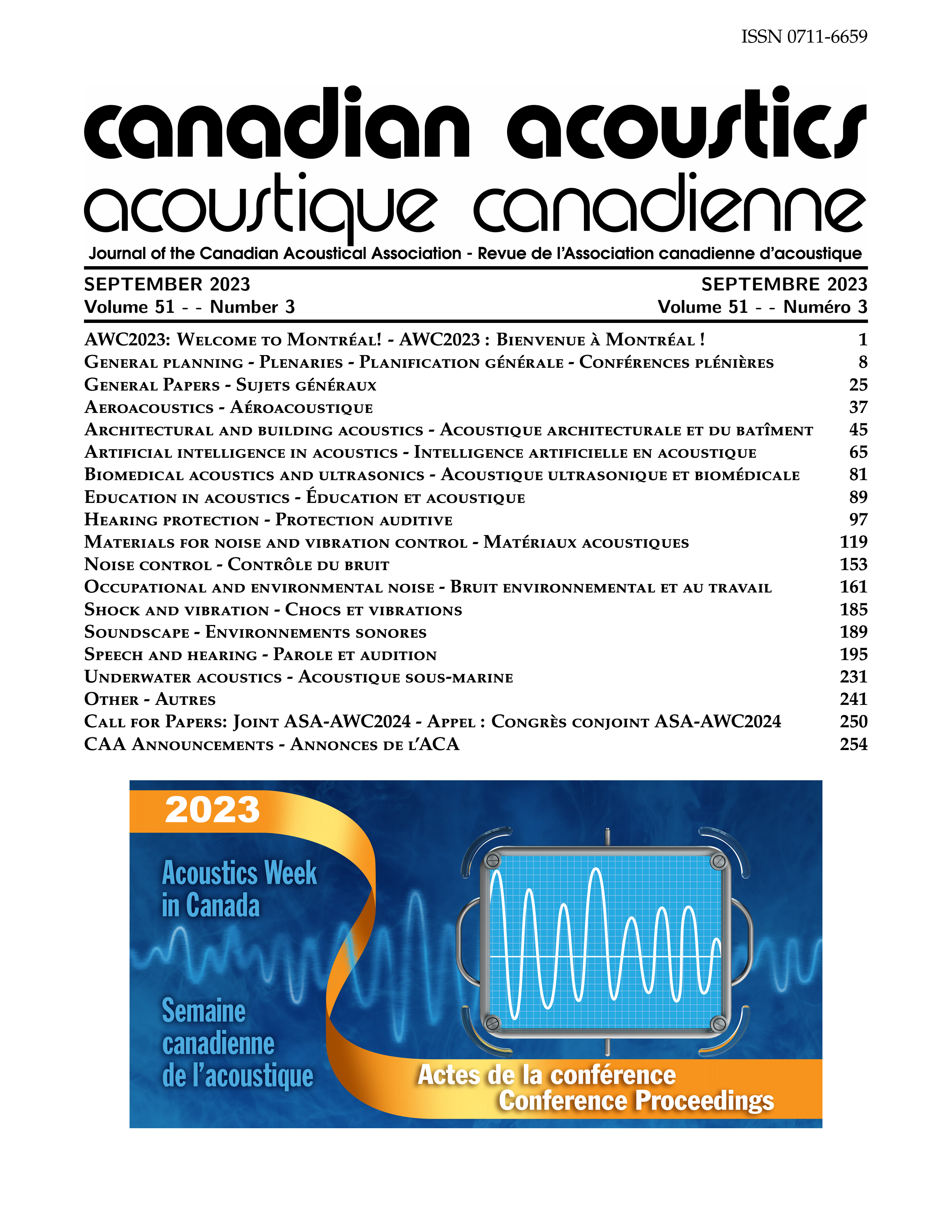Electroacoustic performance of alternative listening devices: candidates for individuals with mild to moderate hearing loss?
Abstract
The past few years have seen a meteoric rise in technological advancements in the hearing health industry. Advances in connectivity, miniaturization and artificial intelligence enable many increasingly sophisticated and diverse features within multifunctional in-ear devices. Such listening devices, often referred to as “hearables”, aim to become real “bionic ears” offering hearing protection, amplification, monitoring and biodetection functionalities. With the recent approval of the "Over the Counter Hearing Aid Act" in the United States and the introduction of “Over The Counter” ("OTC") hearing aids, these devices now have the potential to revolutionize the world of traditional auditory amplification.The aim of this study is to present a research initiative launched within the ÉTS-EERS Industrial Research Chair in In-Ear Technologies (CRITIAS) at the École de technologie supérieure facility. First, we will discuss the relevant literature onhearables and OTC hearing aids, including the limits and challenges of these devices. Then, we will present our methodological approach to evaluate electroacoustic performances and head-related transfer function (HRTF) of differenthearables and OTC devices, with a sample of preliminary results presented. Finally, we will reflect on new research to be carried to further understand the potential ofhearables and OTC hearing aids to improve communication and quality of life of individual with mild to moderate hearing loss.Additional Files
Published
How to Cite
Issue
Section
License
Author Licensing Addendum
This Licensing Addendum ("Addendum") is entered into between the undersigned Author(s) and Canadian Acoustics journal published by the Canadian Acoustical Association (hereinafter referred to as the "Publisher"). The Author(s) and the Publisher agree as follows:
-
Retained Rights: The Author(s) retain(s) the following rights:
- The right to reproduce, distribute, and publicly display the Work on the Author's personal website or the website of the Author's institution.
- The right to use the Work in the Author's teaching activities and presentations.
- The right to include the Work in a compilation for the Author's personal use, not for sale.
-
Grant of License: The Author(s) grant(s) to the Publisher a worldwide exclusive license to publish, reproduce, distribute, and display the Work in Canadian Acoustics and any other formats and media deemed appropriate by the Publisher.
-
Attribution: The Publisher agrees to include proper attribution to the Author(s) in all publications and reproductions of the Work.
-
No Conflict: This Addendum is intended to be in harmony with, and not in conflict with, the terms and conditions of the original agreement entered into between the Author(s) and the Publisher.
-
Copyright Clause: Copyright on articles is held by the Author(s). The corresponding Author has the right to grant on behalf of all Authors and does grant on behalf of all Authors, a worldwide exclusive license to the Publisher and its licensees in perpetuity, in all forms, formats, and media (whether known now or created in the future), including but not limited to the rights to publish, reproduce, distribute, display, store, translate, create adaptations, reprints, include within collections, and create summaries, extracts, and/or abstracts of the Contribution.


